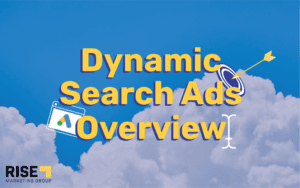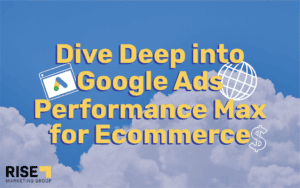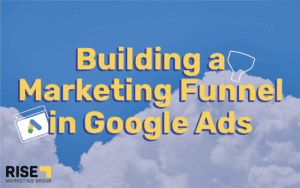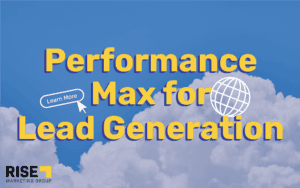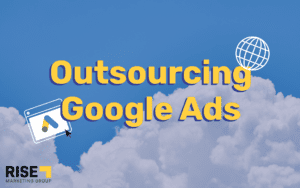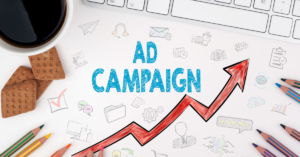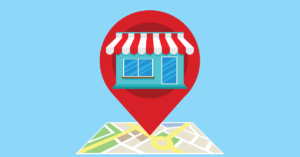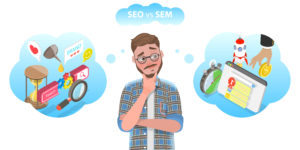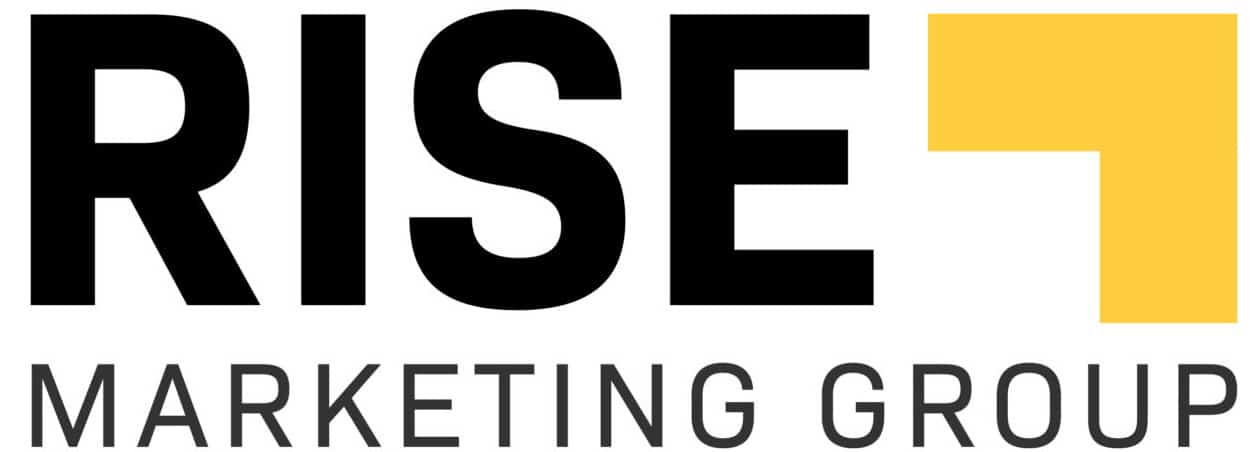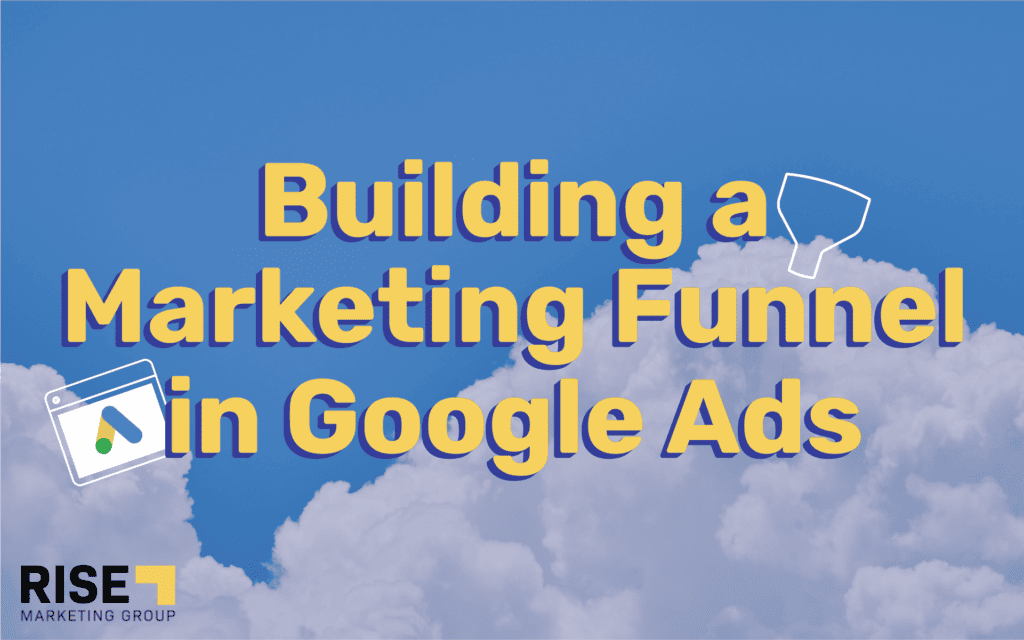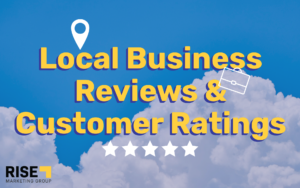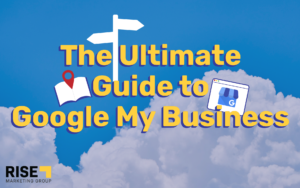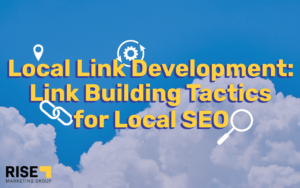In this post we’ll share how to create a funnel in Google Ads, with an example customer journey for buying a family-friendly SUV. The Smiths purchased a used minivan about 5 years ago. The minivan works well for their needs, but it has a lot of miles and is a bit unreliable. They’re planning on buying a new vehicle when their third child starts middle school, about a year from now. They don’t know what brand or type of car they want next and they haven’t put much thought into the new vehicle yet aside from wanting a safe family car.
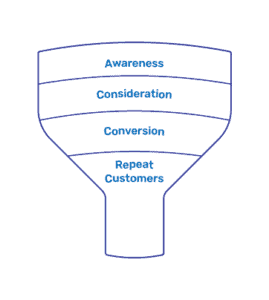
Awareness Campaigns – Top of Funnel
With Awareness campaigns, the sole purpose is to build awareness of your products and/or services within a qualified audience who has not yet expressed an intention to purchase. We aren’t driving them to purchase your product or sign up for your service yet. Instead, these campaigns are your way of introducing your business to qualified prospects.

For Subaru, they want to make sure families like the Smiths are aware of the Subaru Ascent. They don’t want to be pushy or aggressive though, which could make the Smiths dislike the Subaru brand. Subaru knows the Smiths aren’t ready yet for information about pricing, availability, or other details. An ad like this one is a fantastic awareness ad:
Short, sweet, and somewhat entertaining!

The KPIs for measuring awareness campaigns are reach, frequency, brand lift, and impression share. Reach and frequency, according to Google Ads, “measure the total number of people who were shown an ad and the frequency at which they were shown an ad.” In other words, how many people saw the awareness ads and how many times did each person see them in a set timespan, such as 30 days. Brand lift “measures the effectiveness of video ads”, while impression share “is the percentage of impressions that your ads receive compared to the total number of impressions that your ads could get”.
The best ad types for awareness campaigns are video and image ads. The audience at this stage is relatively broad and they don’t know your brand yet, so their attention span is short. You may only have 3-5 seconds to pique their interest. Video and image ad types are very effective at conveying your message succinctly within a short amount of time. Think of those short YouTube ads that end before the “skip” button appears. The call to action on these ads is less pushy as well – something along the lines of “learn more”. Again, we’re just trying to introduce ourselves. The time for closing deals is later on in the funnel.
Below is a reference guide for awareness campaigns.
| Purpose | KPIs | Campaign Types | Targeting | Call to Action |
| Increase awareness of your product/service, to a qualified audience that hasn’t expressed a signal of purchase intent | Reach and Frequency | Video and Display | Relevant demographics, interests, and websites such as forums and blogs | Learn more |
Consideration Campaign – Mid Funnel
After warming up your awareness audience, we start to move them down the funnel with consideration campaigns. The goal of these campaigns is to introduce the audience to specific products or services that you offer. Clicks, page visits, and obtaining contact info are important conversions for these types of campaigns.
Mid-funnel is the right stage for Search campaigns. With Search campaigns, you target specific Google searches related to your product or service. However, it’s important to target keywords that indicate that the searcher is mid-funnel. For example, “safest minivans” or “best family minivans” (mid-funnel) compared to “minivan” (top of funnel).

At this stage, our key performance indicators are going to be metrics that tell us how many people are moving from Awareness to Consideration, such as clicks, website visits, soft sign-ups like newsletters and free trials, 100% video ad views, etc.
Your call to action gets a bit more persuasive, too. You might exchange free content in the form of an e-book or newsletter if they give you their email address or phone number. With this information, you can reach out to them more personally. Examples of mid-funnel calls to action are “download free e-book” or “sign up for our newsletter”.
Below is a reference guide for mid-funnel campaigns.
| Purpose | KPIs | Campaign Types | Targeting | Call to Action |
| Drive consideration of your product/service to a qualified audience who have some level of intent but are not ready to buy right now. | Clicks, sign ups for more information | Search and Display | Non-brand search keywords and custom intent audiences for Display campaigns | Sign up for our newsletter or “Download” |
Conversion – Lower Funnel
Finally, we arrive at the bottom of the funnel! This is where companies close most deals. Your funnel has educated the audience on your products or services and the reasons they should buy from you and not your competitors. This audience has either already decided that they will buy from you or they are deciding between you and one or two of your competitors. In our minivan example, let’s say the Smiths are deciding between a Subaru Ascent and a Toyota Sienna.

The lower funnel is a great stage for Search campaigns targeting high-intent Google searches. For example,“2022 honda odyssey price” or “2022 honda odyssey reviews”. The idea here is to target Google searches related to your product or service and high-intent modifier keywords such as reviews, price, ratings, near me, test drive, dealership, etc.
At this stage, our KPIs become much more revenue-focused. In previous funnel stages, we were building relationships with future customers. In the lower funnel, we want to convert those relationships into revenue-generating new and existing customers. To measure success at this stage, our KPIs are metrics like quantity of purchases, paid subscriptions, and conversion rate.
In our Subaru example, we want to know how many purchases our campaigns are generating. Since people likely aren’t purchasing cars on the Subaru website, we’ll instead track visits to dealerships and test drive appointment bookings, and rely on Subaru sales staff to close the deals. Fortunately, we can set up offline conversion tracking to track purchases from people who interacted with our ads. Offline conversion tracking is a comprehensive topic in its own right so we won’t dive into that in this article but in short, it is the process of linking our CRM with Google Ads so that the CRM reports offline conversions back to Google Ads as a very valuable signal for the campaigns to study. For me, information on offline conversion tracking, check back here soon for our upcoming OCT blog post!
Let’s say the Smiths have seen 5 Subaru Ascent ads over the past 12 months. Last week, they clicked an ad and booked a test drive at their local Subaru dealership which is near their local Toyota dealership. They want to test drive a Toyota Sienna right before the Subaru Ascent test drive and then take a few days to decide which one to purchase. Both test drives go well and the Smiths head home to weigh their options.

They decide the Subaru Ascent is the better choice for their family and call their salesperson’s direct phone number to complete the purchase order over the phone. Once the salesperson updates the CRM, Google Ads receives the purchase data through offline conversion tracking passed to Google Ads from Subaru’s CRM.
| Purpose | KPIs | Campaign Types | Targeting | Call to Action |
| Drive purchases to your product/service | Purchases and conversion rate | Search and Display | Brand and competitor search keywords. Previous website visitors. Uploaded list of leads. | Purchase, or Sign up for X% off your first order, etc. |
Post-Funnel: Repeat Customers
There is one final stage of the funnel, designed to maintain a positive relationship with your customers after they’ve purchased. Think of the last time you purchased a product but had a poor customer service experience with a return or exchange. You’re not very likely to purchase from that company again right? And you’re definitely less likely to recommend them to a friend!
It’s always cheaper to maintain a customer than it is to acquire a new one. Make sure you do everything in your power to make your post-funnel experience pleasant, helpful, reliable, and responsive. Customers at this stage are very valuable for repeat purchases, word of mouth (free marketing!), and more. If you have add-on products, this stage is where you can pitch them.
Effective platforms for post-funnel marketing include:
- Search ads targeting “troubleshooting” keywords, such as “brand plus returns, exchanges, customer service, shipping delay”, etc. These keywords will vary depending on the business. For Subaru, the keywords might be “Subaru service”, “Subaru check-up”, “Subaru oil change”, “Subaru warning lights”.
- Display ads for Subaru service centers, making it easy for Subaru owners to find reputable Subaru service centers near them.
- Email sequences related to their purchase. For Subaru, an email sequence on “keeping your Ascent running in top shape”, or personal follow-up emails from the salesperson making sure that the buyer isn’t experiencing any issues.

For our calls to action, we want to make an offer that keeps our customers happy. Subaru may offer free service for a year if you refer a friend to a test drive, or special savings on new tires for our best clients. Think of what’s important to your existing customers and offer it to them at a discounted rate if they help with your marketing in some way!
| Purpose | KPIs | Campaign Types | Targeting | Call to Action |
| Maintain positive relationships with your customers, drive more revenue where appropriate | Purchases, referrals, sign ups, appointment bookings. This varies by business and strategy. | Search, Display, email marketing, and social media | Searches related to customer service, and email lists of past customers | Purchase, sign up, refer a friend, and more. This varies by business. |
Great! Now, where do I put my ad spend budget?
Now that you understand the overall funnel strategy on Google Ads, we need to decide how much of your budget to invest at the different funnel stages. Since businesses want to show a return on their Google Ads as soon as possible, we recommend focusing the budget on the stages of the funnel that produce the most revenue to immediately generate ROI. Below is an effective budget allocation to start:
- Awareness campaigns: 10%
- Consideration campaigns: 20%
- Conversion/Purchase campaigns: 60%
- Repeat customer campaigns: 10%
This 30/70 split allocates the majority of ad spend to revenue-generating campaigns and the remaining 30% to campaigns that “feed” the bottom of the funnel. This creates scalability and a healthy cycle of new and existing customers.
Creating a complete marketing funnel in Google Ads is critical to success on Google Ads. Without a full-funnel, your campaigns may have a hard time understanding what your ideal customer’s journey looks like. Setting up your campaigns with the right audiences, KPIs, messaging, and budgets set your business apart from advertisers running unfocused swing-for-the-fences campaigns.
If you’ve tried Google Ads in the past but couldn’t find success, you aren’t alone! Setting up a complete funnel like our example above is time-consuming and requires a lot of experience with Google Ads. If you’re interested in
Read More – Case Studies
Want to learn more about how a complete funnel can contribute to your bottom line? Check out the case studies and examples below:
- W.B. Mason: “To date we have seen a 120% increase in first time visitors referred by Google and that generated a 50% increase on orders placed.”
- “Truffle Shuffle exceeds revenue targets with the added reach of Display campaigns”
- “Truffle Shuffle identified an opportunity to reach customers earlier in the sales cycle, nurture them, and then convert during their peak season”
Want Rise Marketing Group to build your digital sales funnel?
Contact us by filling out your information on our contact page and we’ll customize a digital media plan to drive more sales and get your company in touch with new potential customers.
Read our Google Ads Blog Posts and Best Practices
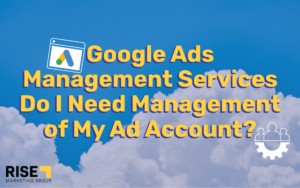
Google Ads Management Services – Do I Need Management of My Ad Account?
